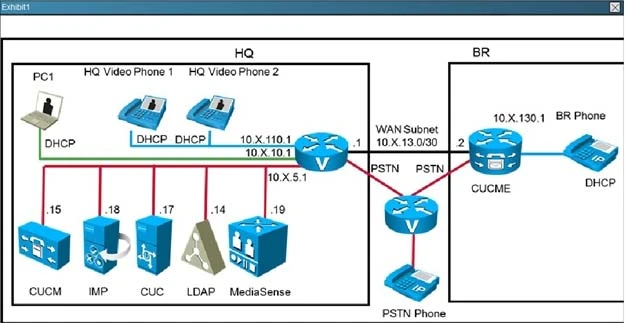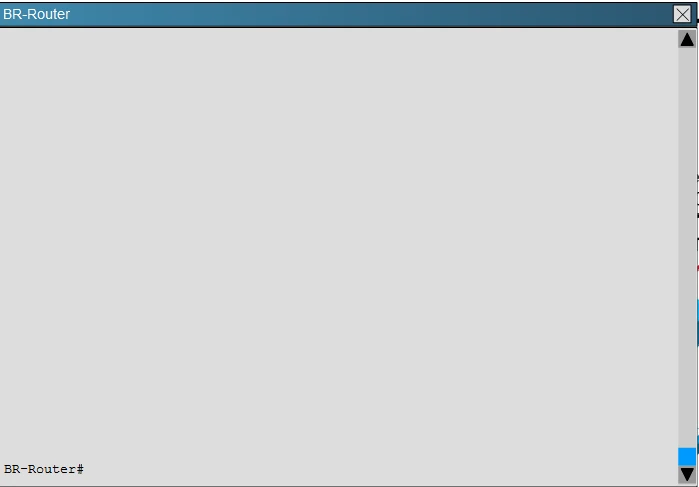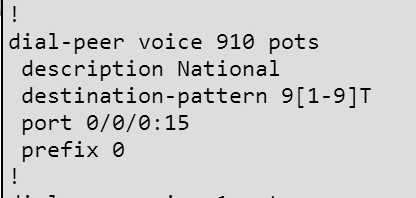

Calls to National numbers are failing. Using the Branch router configuration, correctly determine why these calls are not successful


 B
BThe default port for SCCP (Skinny Client Control Protocol) call signaling on Cisco Unified Communications Manager is TCP port 2000. SCCP is a proprietary protocol used by Cisco and is designated to operate on this port by default.